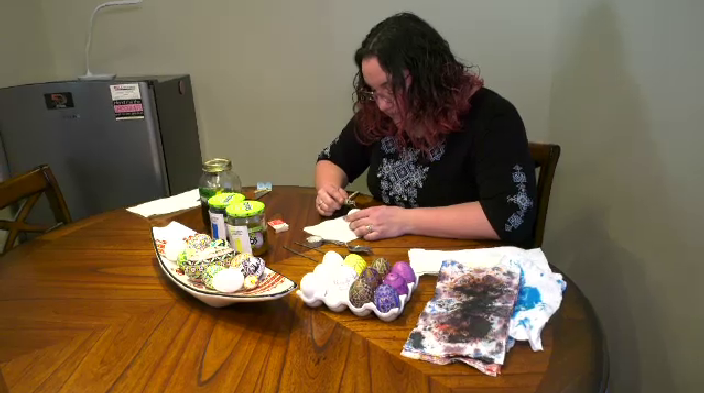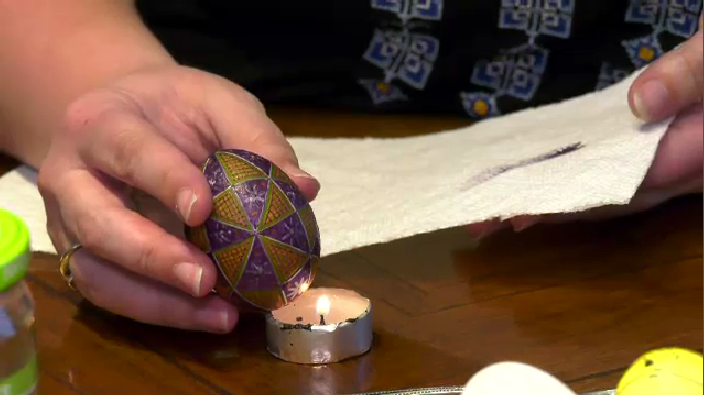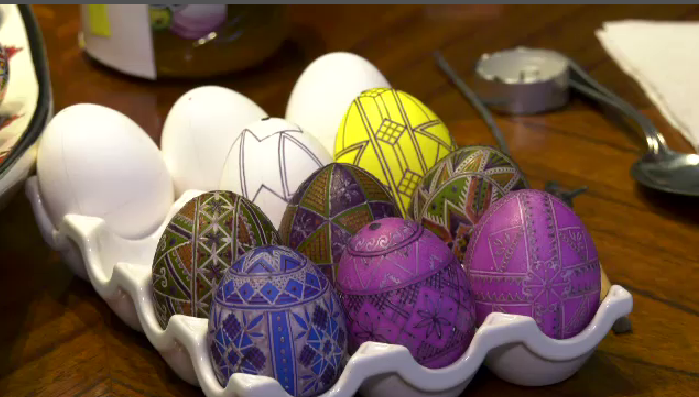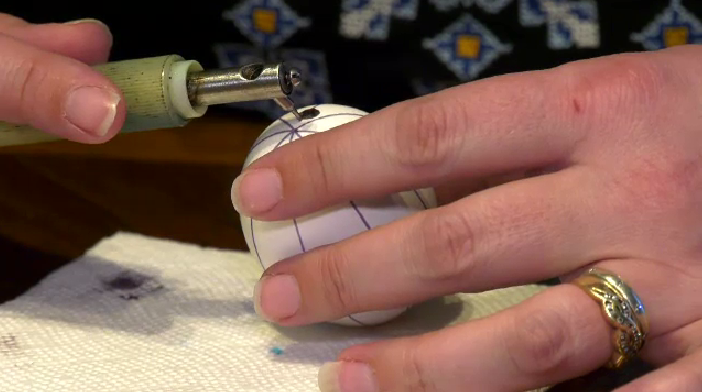'Pysanky keeps the world alive': How Ukrainian Easter eggs can help preserve culture
 A selection of Ukrainian Easter eggs by Tracy Rossier, of Pysanky by Tracy
A selection of Ukrainian Easter eggs by Tracy Rossier, of Pysanky by Tracy
They may look like colourfully decorated Easter treasures but Ukrainian Easter eggs, known as pysanky, have a history steeped in tradition.
With global headlines shining a spotlight on the war in Ukraine, Manitoba pysanky artist Tracy Rossier said interest in the art form has grown due to a desire to protect and preserve the nation’s culture.
“I think it’s really having people reach out to their heritage and their culture and even people who aren’t Ukrainian are really interested in learning more about the culture and traditions as well,” said Rossier.
 Tracy Rossier, of Pysanky by Tracy, usually works with multiple eggs at a time
Tracy Rossier, of Pysanky by Tracy, usually works with multiple eggs at a time
Making them has been a hobby decades in the making for Rossier, who was first introduced to the art of pysanky making as a young girl at the St. Vital Library.
“The egg that I made in the library, in my 6-year-old mind, was very beautiful but I did end up dropping it about 20 minutes before the end of the course so I had to scramble and make a new one,” said Rossier.
After returning home from the workshop, excited and telling stories of the eggs she had made, she soon learned her grandmother had learned the process through her Ukrainian mother-in-law. An inter-generational exchange of materials, props and knowledge followed laying the foundation for a passion that continues today.

Rossier said her interest grew as she learned more about the history and the traditions behind pysanky through research and talking to community members.
“One of my favourite legends actually comes from the Hutsul region of Ukraine,” said Rossier. “For them, they believe the pysanky keeps the world alive.”
The legend tells of a giant monster chained up in the region’s mountains and every year he sends his minions out to see how many pysanka are being made within the world. If the number diminishes, the monster’s chains loosen and it is set loose to wreak havoc on the world.
However, if the number of pysanky increases, the legend dictates the monster’s chains are tightened, meaning good has surpassed evil for another year.
The variety of colours and symbols used by artists on eggs are meaningful, according to Rossier, making each egg unique in a craft that has been ongoing for thousands of years.

Stylistically, the process is started with a basic division of the egg, often with bands dividing the egg into sections. From there, the artist’s creativity takes over.
“I often have an idea in my head when I start an egg but by the time it’s finished it’s something completely different,” Rossier said.
Time spent on each egg can vary, often depending on its size. For Rossier, an average chicken egg takes a couple of hours but when working with larger ones, like ostrich eggs, 100 hours is not out of line.
Pysanky is making a resurgence thanks to social media. There are now popular pysanky artists on Instagram, which Rossier said has spurred interest in younger generations.

“It’s nice to see that it has picked up again because it’s something that’s been going on for thousands of years, I wouldn’t want to see it die out at all,” said Rossier.
She describes herself as an intermediate professional in pysanky but with growing sales across the country and into the U.S., her opinion may be modest.
For someone new to the art form --- the advice she gives is practice.
“If you make a mistake, make it part of the design cause I do that all the time.”
CTVNews.ca Top Stories

BREAKING Suspect in killing of UnitedHealthcare CEO will return to New York to face murder charges
The suspect in the killing of UnitedHealthcare's CEO will return to New York to face murder charges after agreeing to be extradited Thursday during a court appearance in Pennsylvania where he was arrested last week after five days on the run.
Potential scenarios for Prime Minister Justin Trudeau and the Liberals
The Liberal government was thrown into disarray this week when Chrystia Freeland stepped down from cabinet as finance minister, reviving calls for Prime Minister Justin Trudeau to step down or call an election.
Will the Amazon strike impact Canadian deliveries?
As Amazon workers at several U.S. facilities begin a strike, Canadian shoppers are likely wondering how the job action will impact their deliveries.
Google Maps image provides clue in Spanish missing persons case
Chance images captured by a passing Google Maps camera showing a man leaning over a large bag or bags in a car trunk with what could be a human body gave police an extra clue in a murder investigation in the central Spanish village of Tajueco.
Gisèle Pelicot speaks after ex-husband found guilty of rapes, sentenced to 20 years in France
Gisele Pelicot spoke of her 'very difficult ordeal' after 51 men were all found guilty Thursday in the drugging-and-rape trial that turned her into a feminist hero, expressing support for other victims of sexual violence whose cases don't get such attention and 'whose stories remain untold.'
'This shouldn't happen': Calgary family seeks changes after WestJet accessibility incident
A Calgary woman wants WestJet to apologize to her daughter and to improve staff training on accessibility after an incident during their latest trip.
Mystery drone sightings continue in New Jersey and across the U.S. Here's what we know
A large number of mysterious drones have been reported flying over New Jersey and across the eastern U.S., sparking speculation and concern.
What's the best treatment for ADHD? Large new study offers clues
Stimulant medications and certain therapies are more effective in treating ADHD symptoms than placebos, a new study on more than 14,000 adults has found.
'We'll never be the 51st state,' Premier Ford says following Trump's latest jab
Ontario Premier Doug Ford says Canada will 'never be the 51st state,' rebuking U.S. President-elect Donald Trump’s latest social media post.

































